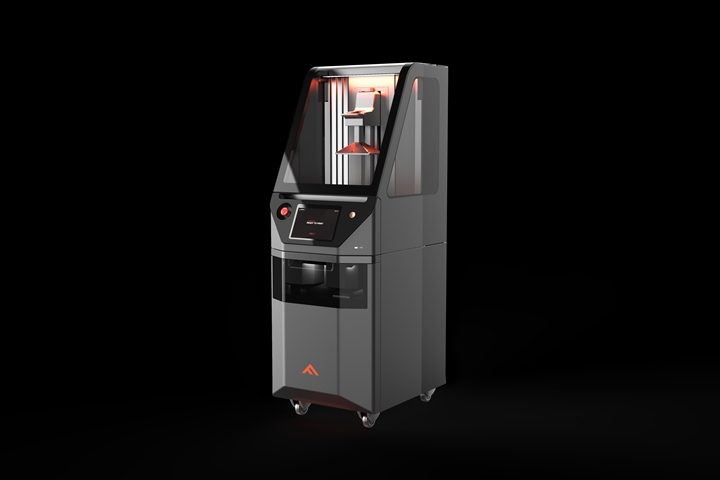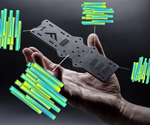Fortify launches Flux One 3D printer for fiber-reinforced polymers
Flux One achieves new material properties and improved functionality with a continuous kinetic mixing (CKM) module and Fluxprint magnetic alignment to manage fiber orientation.

Source | Fortify
Digital manufacturing company Fortify (Boston, Mass., U.S.) reports it is preparing to ship its first Flux One 3D printer for production with filled and fiber-reinforced polymers (FRP). The printer features a Continuous Kinetic Mixing (CKM) module and Fluxprint magnetic alignment, and uses digital composite manufacturing (DCM), developed to unlock new material properties Fortify says cannot be achieved with 3D-printed photopolymers alone.
The CKM module specifically targets the mixing, heating and recirculating of resins. Fortify says the system ensures that particles stay in suspension instead of agglomerating or settling to the bottom of the vat. Further, additives incorporated by the module are said to enhance mechanical performance such as strength, stiffness, toughness, wear and heat deflection temperature, as well as thermal and electrical properties like conductance and dielectric strength.
The printer’s Fluxprint fiber alignment module improves functionality by applying a magnetic field to each layer across the build area, which aligns all fibers. UV light then selectively cures regions of the layer, locking the fibers’ orientation. This process is repeated for each layer.
Weighing in at 500 pounds (226.9 kilograms), the Flux One also offers a 180-degree view for easy access, digital light processing with its DLP light engine and a materials dock for fiber and resin handling. Fortify says the printers are being deployed at customer sites for tooling and other applications.
Related Content
-
ATLAM combines composite tape laying, large-scale thermoplastic 3D printing in one printhead
CEAD, GKN Aerospace Deutschland and TU Munich enable additive manufacturing of large composite tools and parts with low CTE and high mechanical properties.
-
The next evolution in AFP
Automated fiber placement develops into more compact, flexible, modular and digitized systems with multi-material and process capabilities.
-
3D-printed CFRP tools for serial production of composite landing flaps
GKN Aerospace Munich and CEAD develop printed tooling with short and continuous fiber that reduces cost and increases sustainability for composites production.












